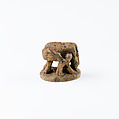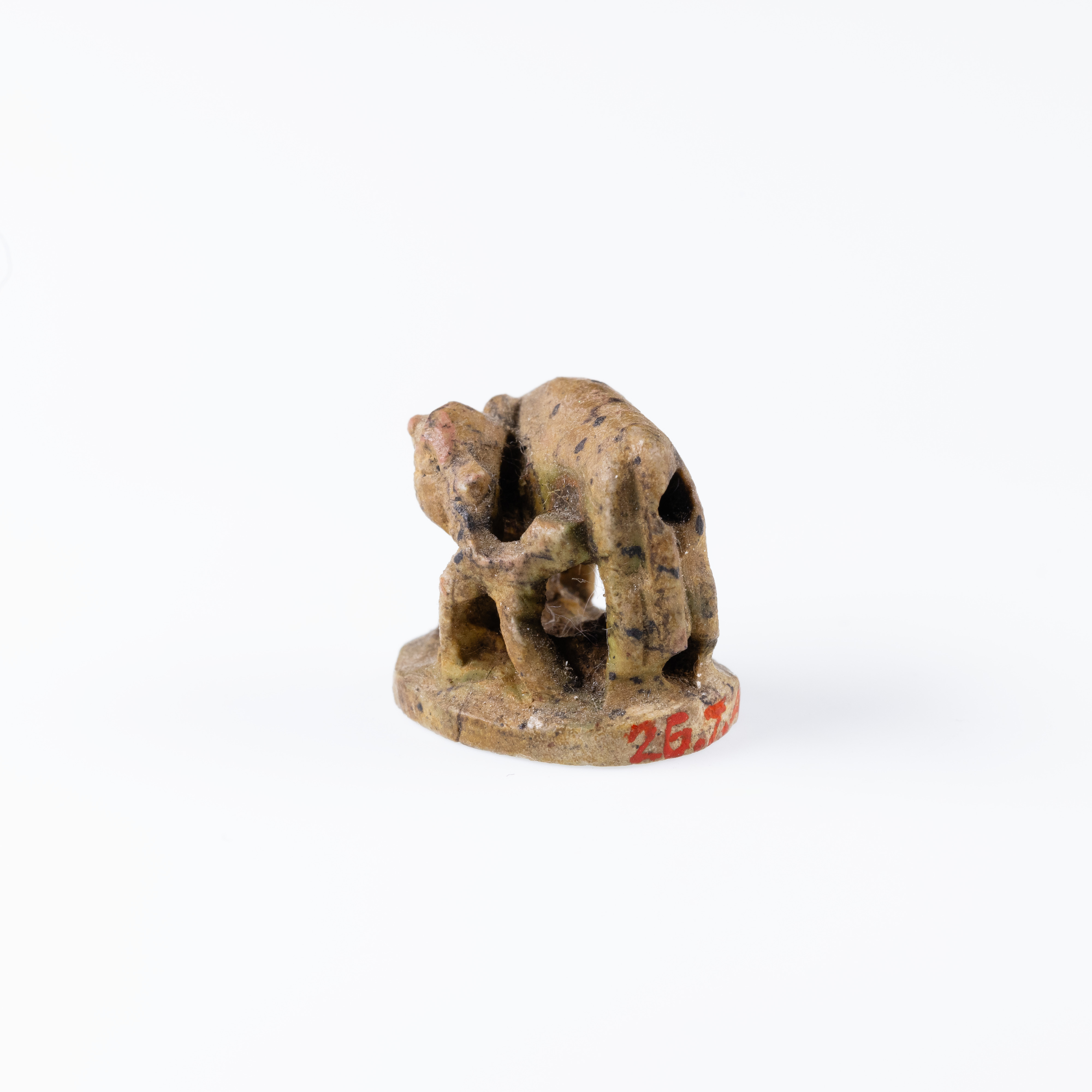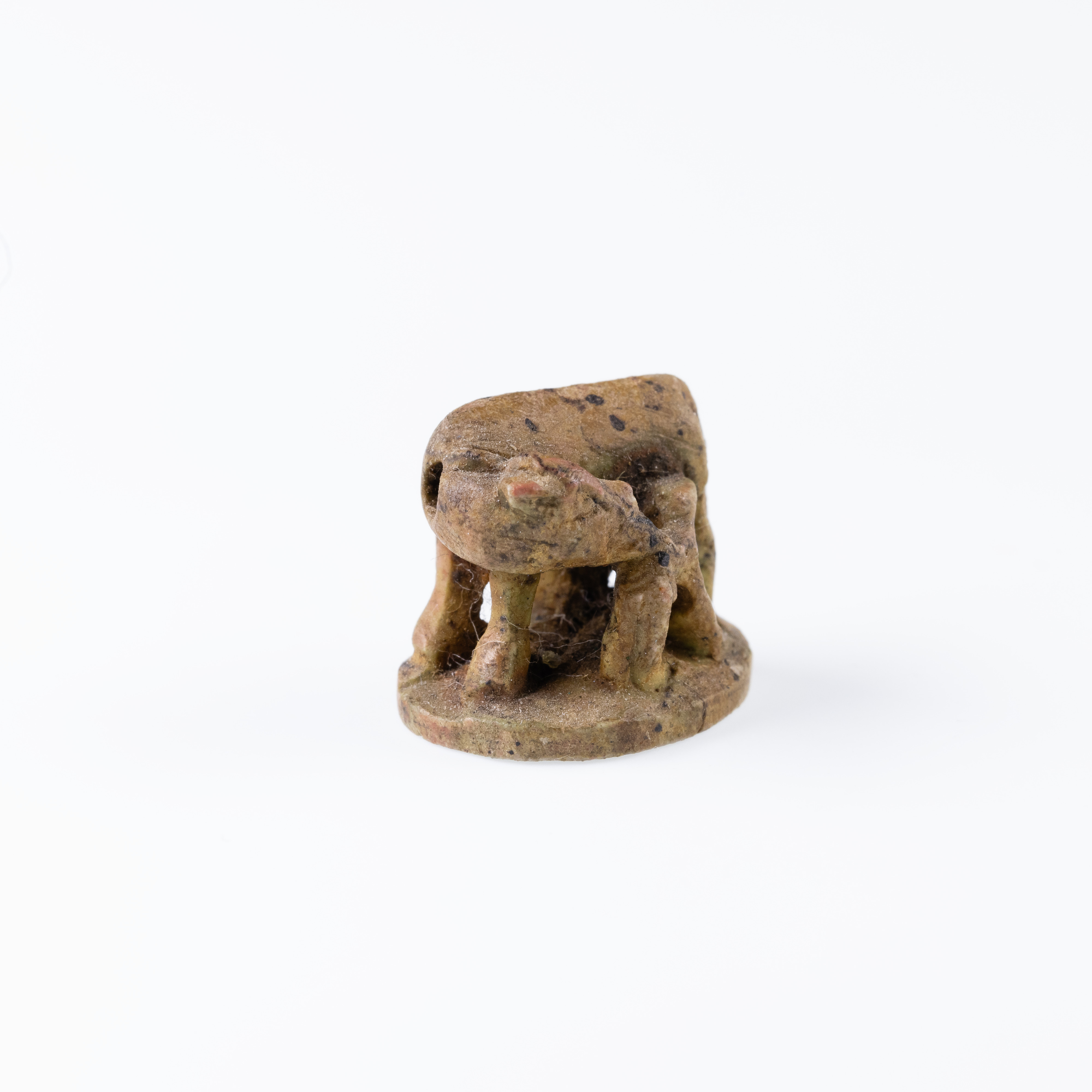Design amulet, Cow and Calf on the Back, Device showing Antithetical Falcons Flanking an Ankh Sign over a Crouching Lion
First Intermediate Period
Design amulets from the late Old Kingdom and First Intermediate Period, also called button seals or figure seals according to their form, were at least in some instances used as seals. They seem overwhelmingly, however, to show devices (base decoration) and combinations of figural backs and base decoration that are clearly amuletic in nature; moreover, at least at Qau, they came mainly from the burials of women and children. Examples are preserved from tombs where they were buried with the dead, sometimes incorporated in strings of beads and amulets.
A recent study has cast considerable light on the motifs and their amuletic significance. For the design amulets with three dimensional figural backs, the backs and the device on the base relate in some manner. Here the base device shows antithetical falcons on either side of an ankh, emblems of royal power and royal protective power; the crouching lion that appears beneath them is thought to represent in this context dangerous powers controlled by the king. In conjunction with a nursing human mother or, as here, the closely connected nurturing and nursing animals, the emblem can be thought of as the alignment of powerful protective forces and wishes for the vulnerable young or the vulnerable dead.
Due to rights restrictions, this image cannot be enlarged, viewed at full screen, or downloaded.
This artwork is meant to be viewed from right to left. Scroll left to view more.







